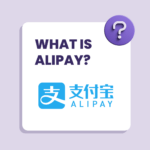Two models and three types of payment methods to China suppliers
Have you ever encountered different ways of payment required by Chinese suppliers? Some require US dollars payment, some require RMB payments, some require private accounts payments and some require public accounts payments. Which one gives us the biggest advantages? Which payment method and how to operate in essence?
From Malaysia’s point of view, our payment methods can be categorized into Bank TT, Letter of Credit (LC), remittance through a transportation company, or money changer remittance. There is a variety of payment method selections. Among all the methods which one is the most suitable for yourself?
First, we must know the two most used payment models.
First
Direct Exchange – Transferred directly from Malaysia to China under your own company’s name.
This model is generally for a relatively large-scale import. The import documents are imported by their own company and they can have the import records. If the company is dealing with SIRIM, MITI and other issues, this model would be the best choice.
However, for some industries with many suppliers and the purchases are small and varied, it is not appropriate to use this method.
The second
Gathering – One-time collection of other companies through third parties.
This model makes payment to the forwarder first, and then the forwarder collects all customer’s money in one go to China. This model is currently the most used method. This is because when freight forwarders collect all one-time remittances, they can save some bank charges. Plus, banks generally give more favourable exchange rates to freight forwarders.
This approach will be more flexible, and some manufacturers require them to pay RMB to their personal accounts in order to send money.
Here we take a look at the three most commonly used payment methods
1. U.S. Dollar TT
This method is mostly used for relatively large amounts of transactions. Generally speaking, transactions for Full Containers Load (FCL) will be traded in U.S. dollars. Surely, under certain circumstances, a small number of transactions will also be useful for U.S. dollar transactions.
Firstly, let us study why manufacturers required US dollars for trading. Due to several reasons, the first and most common reason is that they have to handle export tax rebates in China. The export tax rebates must be made with international remittances (usually US dollars). Successful handling of tax rebates, it can allow manufacturers to get back up to 17% of the subsidy, so they will require us to trade with the US dollar. With a rough understanding of the purpose to do so, next we use Malaysian point of view of the advantages and disadvantages of using US dollars for remittances. In the current international exchange rate market, remittances in RMB will undoubtedly be one of the best ways to reduce currency loss.
Therefore, we must understand the manufacturer’s requirement to do a transfer in US dollars for exportation. If there is a tax refund, no other choice will be available. We must remit the US dollars to them according to their requirements, otherwise, they will not get back the 17% of the export tax rebate. In another case, suppliers are accustomed to exporting. They do not know that we can actually remit (RMB) Yuan to their personal accounts, so they will initially ask us to send in U.S. dollars.
So we have to learn how to deal with manufacturers about our requirements. We can directly ask them, “Can I directly remit RMB to your private account?” Some manufacturers will welcome this type of remittance because they will not have to do export tax rebates. Direct payment to their private accounts will save a lot of trouble.
2. RMB exchange accounting
Before we start this topic, we must understand what is the difference between the public ledger and the private account. The public ledger is the company account (company account) and paying the VAT is compulsory. A private account is a personal account that can avoid VAT.
Then there are two kinds of public accounts, one is a multi-currency account, which means foreigners can do TT (telegraphic transfer) into their accounts from foreign countries; the other is the domestic RMB account, which is in China. The bank’s money transfer. So how do we identify which type of account the manufacturer gives us? Very simple, the bank account given by the manufacturer consist of a lot of information, such as the following:
HSBC Business Direct Account Name: HK xxxxxx Electronic Co., Limited
HSBC Business Direct Account Number: 5×1-8xxxxxx-8xx
Beneficiary Bank Name: HSBC Hong Kong
SWIFT Address: HSBCHKHHHKH(for telegraphic transfers)
Beneficiary Bank Address: 1 Queen s Road Central, Hong Kong
This is a foreign currency account. You must get a TT (telegraphic transfer) from a bank in Malaysia or other countries to get it. On the other hand, the domestic RMB account number is as follows:
Account Name: XXXXXXX Co., Ltd.
6xx6 1xx6 8xx4 3xx4
Minsheng Bank Shenzhen Hongxun Branch
This is the domestic RMB account, and it will use China’s domestic bank exchange RMB.
3. Using RMB for private account payment
In China, it has become a common practice for private transactions in business activities. Many Malaysians refuse this practice because they feel insecure. Hence, this trading method is not used by Malaysians. So don’t be surprised when the manufacturer asks you to send money into his private account. This is a very common thing.
According to the data, almost 70% of Malaysian importers and Chinese manufacturers are paying through private accounts when they purchase. How do you pay to their private accounts?
If you use TT (Telegraphic Transfer) of the Bank of Malaysia to transfer to the private account of the manufacturer, you are generally using the “collection” method for remittance. For instance, we will send money through the forwarder and the freight forwarding will collect at our house. The currency was then remitted to China in one go and converted into RMB, then transferred to the manufacturer’s private account with a Chinese bank account.
Many people also choose to open a private account with a Chinese bank, and then let the forwarder directly transfer the RMB to their account. Then, they operate their own funds to the manufacturers. Refer to the process on how to open private accounts in four major banks in China. – CIEF has a detailed explanation regarding the process.
To sum up:
Each company’s operation is different. Find a remittance method that suits your company, and then try to use the same remittance method for all manufacturers to operate, so that our own purchasing department or account department can have a better communication process.














